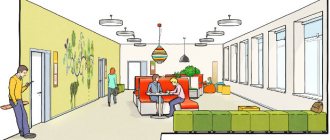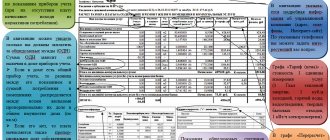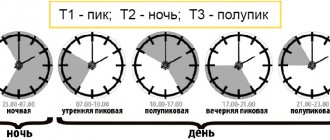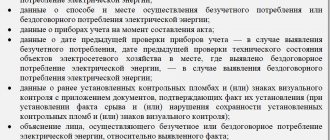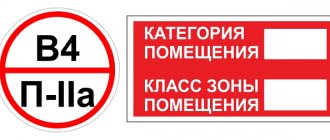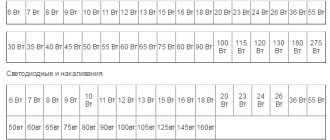Electricity is a type of utility service that you cannot do without, but it is also quite difficult to pay for it.
In addition to various energy saving techniques, there is another alternative way to save electricity - install a special meter and use a night tariff.
By using basic electrical appliances at night, you can significantly reduce your utility bills.
Night electricity tariff: what time does it start and when does it end? What else do you need to know and how to manage your time? The answers to these questions are in our article.
Electricity by the hour - who benefits from it?
During the day, the population uses electricity unevenly . During the daytime, the stations operate almost under time pressure, but in the evenings their load is minimal. Therefore, during the daytime, as a rule, there is a peak in consumption: all generators turn on, and at night, on the contrary, some of them turn off.
This uneven operating mode contributes to high fuel costs for equipment. And this leads to a significant overexpenditure of resources. Therefore, the cost of generating electricity is steadily rising.
To reduce costs, energy suppliers have developed a differentiated tariff that operates by day zone.
It is cheaper to use electricity at night, and this encourages the population to actively use it at this time of day. Thus, the maximum consumption shifts. You can save only if you have a two- or three-tariff meter.
What time does the night rate start?
At the legislative level, 3 options for tariffing electricity consumption are defined:
- single;
- 2-zone;
- 3-zone.
The payment coefficient is uniform and constant, time does not affect it.
When choosing a single tariff, costs are calculated using a traditional meter without differentiation. This is suitable for consumers who do not want to change equipment.
Using a 2-zone tariff requires the installation of a two-tariff electricity meter.
The meter calculates the level of current consumption in different time zones . Here is the time at which it turns on:
- from 7.00 to 23.00 - daily rate (more expensive);
- from 23.00 to 7.00 - night rate.
Calculation of payments for daytime and nighttime electricity tariffs is carried out in the following way: data from the meter is multiplied by the tariff adopted by local authorities.
Two lines are entered in the receipt for utilities - for daytime and nighttime tariffs, respectively.
The 3-zone tariff is based on a principle similar to the 2-zone tariff, but the time frame is different.
Below you can see from how many hours and until how long time zones last:
- from 23.00 to 7.00 hours - night rate;
- from 7.00 to 10.00 and from 17.00 to 21.00 hours - peak time;
- from 10.00 to 17.00 and from 21.00 to 23.00 - half-peak zones.
Each time period has its own coefficient. However, this scheme has not become widespread due to the weak difference in the benefits of the last two zones.
How does a two-tariff electricity meter work?
Rising prices for electricity supplies are rising, which forces the average person to look towards cost-effective electricity meters. Unlike old induction devices, new devices have a number of advantages: two or more tariff zones, a minimum accuracy class limit, synchronization of indicators, etc.
Operating principle of a two-tariff electricity meter:
- Tariff zones . The device is programmed , and two zones are distinguished - “day” and “night”. The first zone counts the number of kW used by the consumer in the period from 7-00 to 23-00. The “night” tariff zone takes into account the period located between 23-00 at night and until 7-00 in the morning;
- Database. The basis of a modern meter is an industrial controller. Like a minicomputer, in its memory it stores a minute, hourly and “daily archive” of kW used by the user;
- Radio module. Almost all new models are equipped with radio modules (GSM or 3G technology is used), and monthly meter readings are automatically transmitted to accounting and control authorities .
Additional options, such as a built-in “event log,” allow you to analyze voltage consumption and redistribute the load when using electronic devices to obtain a favorable tariff.
Time of night electricity tariff
The 2-tariff method uses night mode for electricity . The time of its use starts from 23.00 and lasts until 7.00.
You can first calculate how much you can save. As a rule, light at night costs almost 3 times less.
It is only possible to save money if a person is not at home during the day and prefers to solve everyday issues at night - use electrical appliances, do laundry, cook, etc.
Experts believed that when switching to a differentiated approach, you can get real benefits by spending at least 500 kW per month.
Types of electricity tariffs
There are only 3 accounting systems:
- Single tariff, in accordance with the name, all 24 hours of provided energy is paid at 1 price.
- Two-tariff - involves dividing the day into 2 unequal parts, from 11 pm to 7 am the night period is valid, the rest of the time - daytime.
- Multi-tariff - contains 3 parts, in which the night is limited to the period from 23-00 to 7-00, the peak period is from 7 to 9 am and from 17 to 20 pm, the half-peak period is between 9 and 17 o'clock, and also between 20 and 23 hours.
Electric meter readings can be taken in several ways. The first option is similar to when a classic mechanical counter is used. The data is obtained by visual inspection of the digital display and is transferred to the receipt manually, or communicated to energy company employees in person or by phone. The metering device will gradually reflect the number of kilowatt/hours spent during the day or at night (for a 2-tariff scheme), then this information should be multiplied by the corresponding prices per 1 kW. With automatic reading option: these devices are capable of sending information remotely.
Sending is carried out using wires, or using radio frequency signals, to the computer of the clearing center.
Temporary peak zones
With daily dynamics, there are several rush hours:
- morning peak - from 7.00 to 10.00;
- daytime zone (first half-peak) - from 10.00 to 17.00 (not too heavy a load);
- evening peak - from 17.00 to 21.00;
- the second half-peak zone is from 21.00 to 23.00.
To obtain savings on utility bills specifically for power supply, you will need to install special metering devices and change your usual lifestyle.
This means that powerful electrical appliances can only be used at night.
The designation of day and night on a two-tariff meter is fixed by symbols T1 and T2 . The period for T1 starts at 7.00, for T2 - at 23.00. Peak zones are taken into account if electricity consumption is calculated using a three-tariff meter.
Peak Electricity Zone: Time
The peak zone is considered to be the time when most citizens are at home and actively using electricity. These are morning hours from 7 to 10 and evening hours from 17 to 21 - the time when users come home from work.
There are 5 zones of the day, depending on which the cost of a kilowatt may vary:
- night zone - 23:00 - 7:00;
- morning peak - 7:00 - 10:00;
- half-peak 1 – 10:00 – 17:00;
- evening peak - 17:00 - 21:00;
- half-peak 2 – 21:00 – 23:00.
The figure below clearly shows the dynamics of electricity consumption by zone.
Let's look at the tariffs for each zone in more detail.
Night zone
This is the zone from 23 pm to 7 am. During this period, the most favorable tariff applies. This zone should account for the maximum waste of electricity. You will only feel the benefit if your nighttime activity is significantly higher than your daytime activity.
Reference! To benefit from a two-tariff meter, run high-power electrical appliances between 11 p.m. and 7 p.m.
Morning peak
The morning peak zone begins at 7 am and lasts 3 hours, until 10:00 am. At this time, most citizens get ready for work and actively use electricity.
Evening peak
The evening peak zone begins at 17:00 and lasts until 21:00. This is due to the greatest activity of the population. At this time, most people come home from work and begin to do household chores and actively use household appliances.
Half-peak
There are two half-peak zones: daytime and nighttime. The first lasts from 10:00 to 17:00, the second - from 21 to 23 hours. These zones occupy the longest time period.
Half-peak zones have an average cost between the day and night tariffs if the device keeps records at three tariffs. If your meter has only two zones, then payments during these hours will be calculated according to the “day” rate.
Day-night tariff
A tariff based on a two-phase method is usually called day-night. And although tariffs for the population differ, the 2-phase method is very popular in many regions of the country.
The differentiated tariff is most popular in Moscow. Its benefits are obvious to those who:
- actively uses powerful electrical appliances in everyday life - bread machines, dishwashers, boilers;
- equipped your home with a convection heating system and heated floors;
- has spacious suburban real estate, the lighting of which requires numerous electrical appliances, sewer and well pumps.
Access to the service is open to all persons who do not have arrears in payments for electricity, have paid a special fee for tariff identification and have entered into an agreement with the service provider.
Benefits of a night tariff in 2021
There are advantages to using a night tariff, and they are obvious:
- good money savings when adjusting the regime, reducing daytime electricity consumption and increasing nighttime consumption;
- reducing the load on the supplier’s equipment, reducing its wear and eliminating breakdowns. All this ultimately leads to budget savings;
- evenly distributing the load on the power grid is the best way to save fuel used to generate electricity;
- if there is no overload on the power grid, the amount of emissions of harmful substances into the atmosphere is reduced;
- modern meters are the latest modernized devices equipped with built-in memory modules that retain readings even if there is a sudden power outage.
Consumers should be aware that different preferential rates apply in different regions . Before switching to a differential system, it would be a good idea to calculate the economic benefits of such a solution.
If only the refrigerator is running in the house at night, a two-tariff system is not so necessary. Calculate how long it will take to pay off the costs of installing new equipment and electrician services.
What is the night tariff for electricity?
Most citizens of our country are switching to two-tariff metering in order to save on utility bills. Previously, only single-tariff light consumption meters were used, for which there was a single rate at any time of the day. Now the consumer can choose a tariff depending on the type of electricity meter.
Two-tariff devices take into account energy consumption during the day and at night. The peak load on the power grid is in the morning and evening hours, when the rate is high and is taken as one. At night, consumption decreases, and accordingly, the tariff decreases to 0.7 of the daily rate. Thus, the consumer can save up to 30% when paying for electricity.
Disadvantages of the night tariff
There is always a drop of tar in every barrel of honey. There are also disadvantages in using the night tariff:
- If you use electrical appliances at night, some of them should not be left unattended. As a result, sleep patterns may be disrupted and health problems may arise;
- appliances left unattended can cause fire or flooding;
- noise from household appliances can interfere with other family members’ rest;
- significant costs for installing a metering device and the services of electrical specialists.
If you actively use the night tariff, all expenses will be recouped in the first year of its use.
How to switch to a night electricity tariff?
If you have a need to install a meter with double tariffing, then you need to purchase an electric meter in a specialized store.
Important! When purchasing, pay attention to the factory production date of the meter, since the calibration interval begins precisely from this period.
After purchasing the device, you must contact your energy sales company and write an application to switch to a two-tariff system and install a meter. After this, technical specifications will be issued, and the master will carry out installation within the agreed time frame. When installed, the meter is sealed, and initial readings are taken from it and sent to the management company.
How to connect a night tariff for electricity
To switch to the two-tariff mode, follow the following instructions:
- Contact your service provider in your area.
- Visit their branch and find out the technical feasibility of switching to a differentiated system.
- Draw up an agreement for the supply of electricity to a specific facility.
- Write an application for installation of a 2-tariff power meter. The application will be accepted only if you have no debt on utility bills for electricity, payment has been made for the dismantling of old equipment and installation of new equipment, its connection and configuration.
- It is not necessary to purchase a meter with a night tariff from a service provider. This can be done at any specialized company or store, but in this case you will need to first submit the device for verification.
In Russia, the installation of both domestic and imported meters is allowed. Experts advise choosing Russian equipment.
These devices are adapted to voltage surges in the network and are marked with state certification . Their cost is significantly lower than their foreign counterparts.
You can do the installation and connection yourself, but it is better to use the services of qualified craftsmen. The specialist must have an electrical safety permit.
After installing and configuring the equipment, a report is drawn up that will need to be submitted to the energy sales office . In most regions of Russia, energy supply service providers provide a full package of services for switching to a night tariff.
Is there a nightly tariff for electricity?
The essence of multi-tariff metering of energy consumption is differentiation, that is, redistribution of the load on the network. It is known that light consumption in the morning and afternoon is higher than at night. Therefore, at substations, generators operate at full capacity during peak times, but at night, some of the generators are turned off. To reduce the load, power engineers introduced two-tariff metering.
In each region, the energy sales company sets its own tariff for the resource consumed. The cost of the night rate is calculated at a coefficient of 0.7 from the established daily price. Thus, the night tariff allows the consumer to save up to 30% of the cost of electricity.
How to get data from the device
Two-tariff metering devices record the amount of electricity consumed and other network parameters.
To obtain data on the amount of electricity consumed over a certain period of time, you will need to switch to identification mode : this will require a few simple manipulations on the meter buttons.
This mode provides information on current consumption in the dark and during daylight hours. So you will get the number of kilowatts spent separately at night and during the day. The recorded difference is multiplied by the coefficients established in the region.
